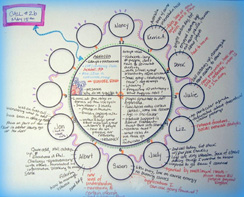Difference between revisions of "Teleconference Clock Method"
From Learning and training wiki
Marco.perone (Talk | contribs) |
Marco.perone (Talk | contribs) |
||
| Line 26: | Line 26: | ||
=='''General Call Etiquette'''== | =='''General Call Etiquette'''== | ||
| − | + | *Call from a quiet location. | |
| − | + | *Avoid cell phones and speakerphones. If you use them remember to put the mute button when not talking. | |
| − | + | *Use quality headsets to avoid metallic sounds. | |
| − | + | *Avoid paper rustling. | |
| − | + | *Caution with multitasking; some is unavoidable but remind people about attention: occasionally call for a moment of silence to keep their attention. | |
| − | + | *Consider a kind treatment of participants’ bodies: on long calls, offer short breaks. | |
| − | + | *Speak clearly and slow down if you are a "fast talker". | |
| − | + | *Be enthusiastic and use a tone appropriate to the group (the first impression is important). | |
| − | + | *Vary voice tone (avoid monotone presentations). | |
| + | |||
Revision as of 15:32, 9 December 2009
| Method designed to assist moderators to regulate and facilitate the interaction between participants during conference calls. The Teleconference Clock creates a speaking sequence for introducing each participant: people are given a place on the clock as a mechanism to ensure that everyone has a chance to speak. The “clock” is used to encourage participation on conference calls or structured online chats involving more than four people. [1] |
Preparing a Teleconference Clock
Step by Step
General Call Etiquette
Job Aid |
References
- ↑ [1] (26 November 2009),[2] (26 November 2009), [3] (26 November 2009), [<divxmlns:cc="http://creativecommons.org/ns#"about="http://www.flickr.com/photos/choconancy/2333690088/"><arel="cc:attributionURL"href="http://www.flickr.com/photos/choconancy/">http://www.flickr.com/photos/choconancy/</a> / <a rel="license"href="http://creativecommons.org/licenses/by-nc-sa/2.0/">CC BY-NC-SA 2.0</a></div>] (30 November 2009)
